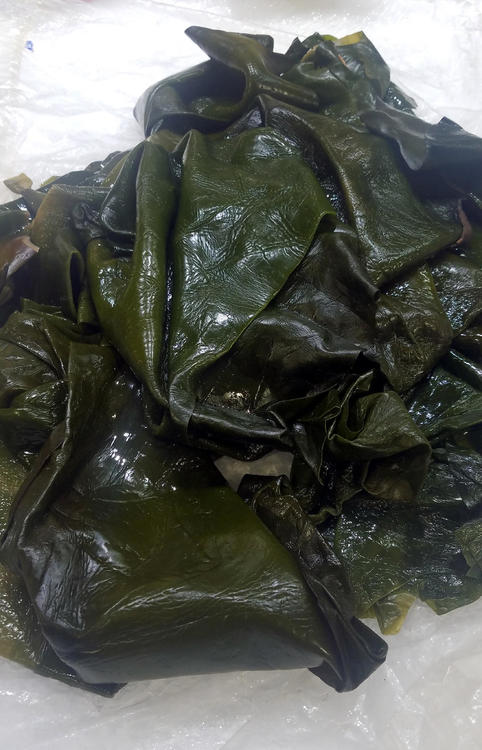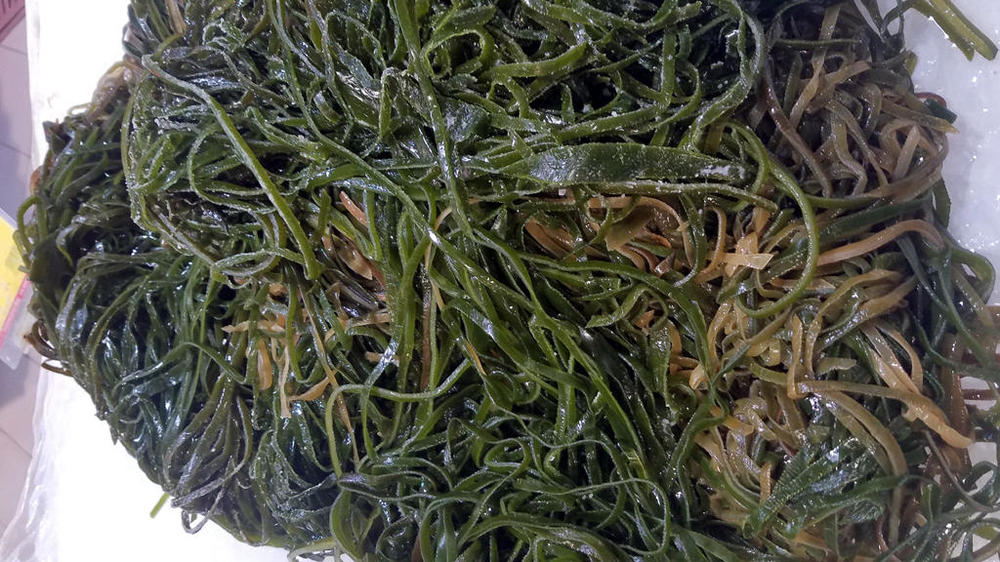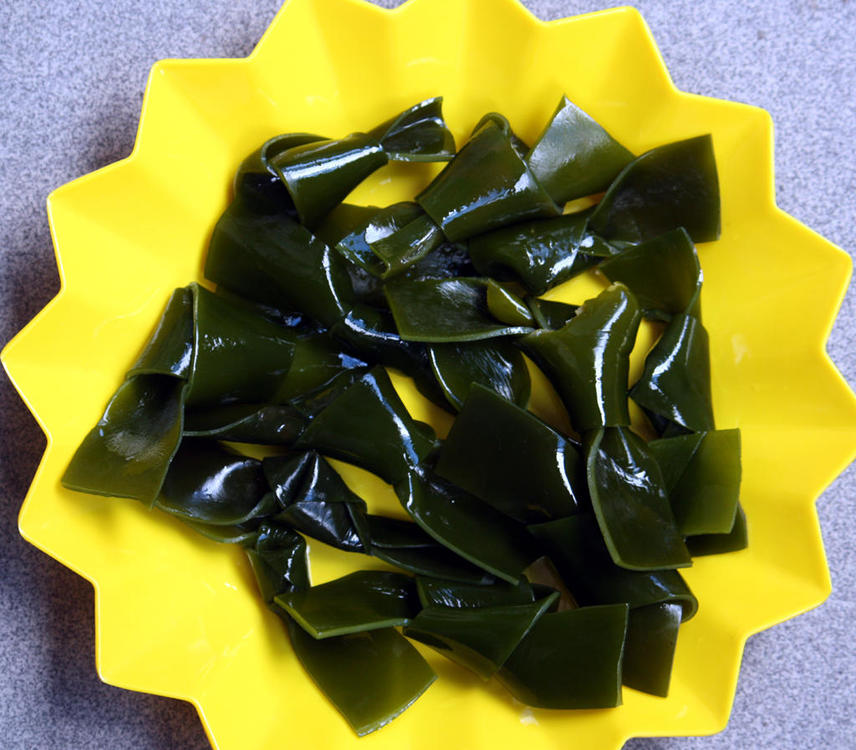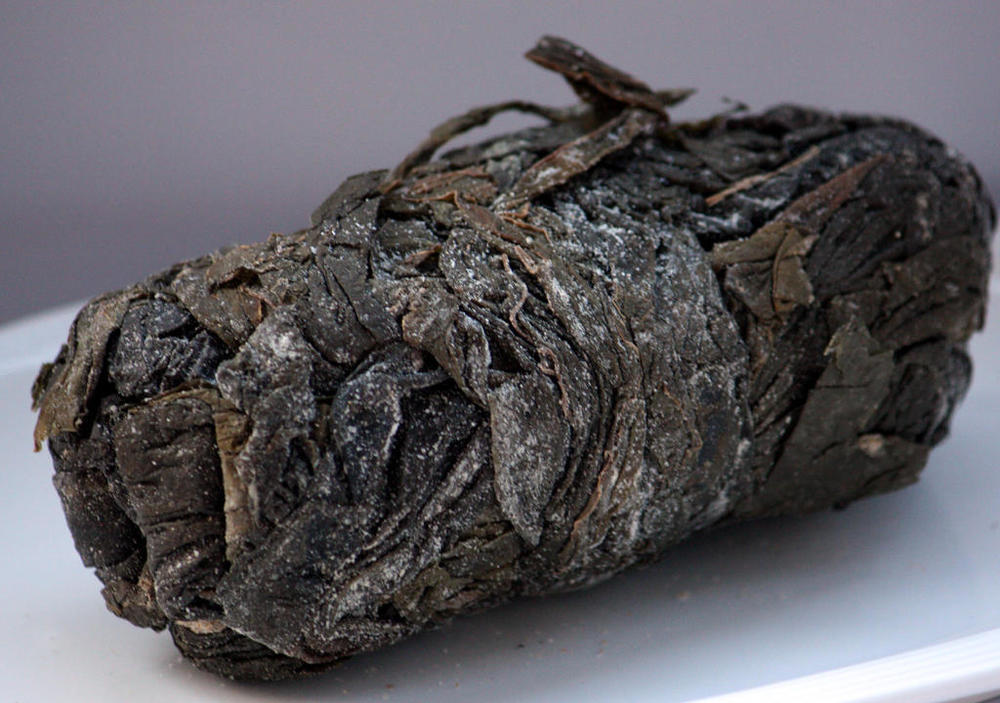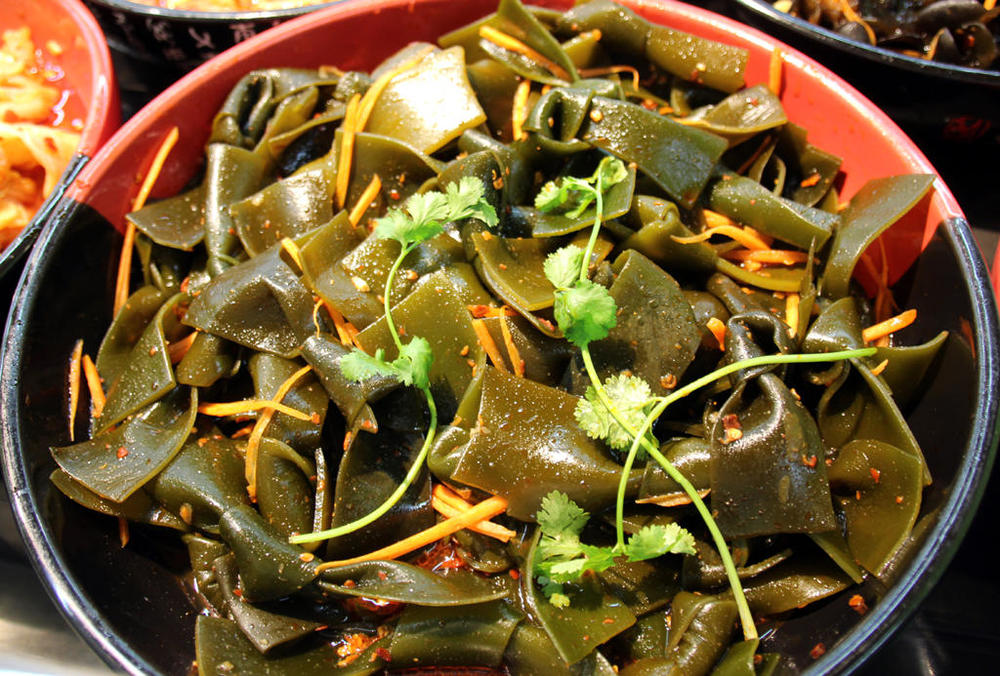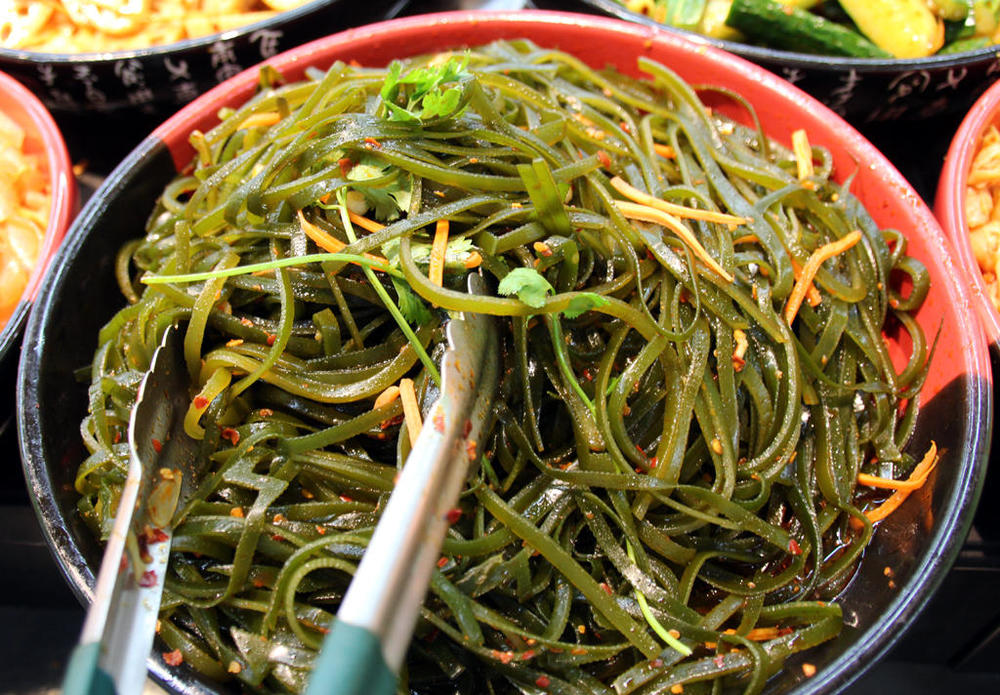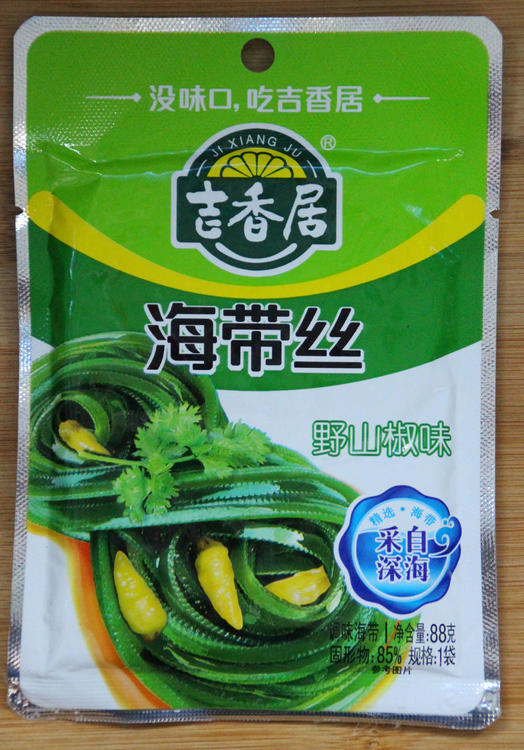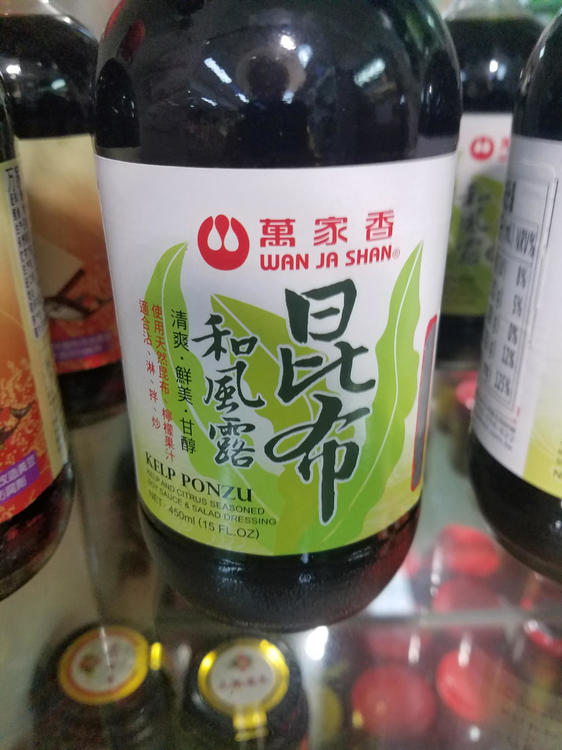This is technically algae, but used as a vegetable and it sure isn't animal or mineral, so I'm putting it here.
Seaweed in Chinese is 海藻 (Mand: hǎi zǎo; Cant: hoi2 zou2). It refers to all varieties, edible or not. Edible seaweed is 海菜 (Mand: hǎi cài; Cant: hoi2 coi3), literally meaning 'sea vegetable'. Told you it belongs here.
We get two main varieties, but in many different forms. First up:
海带/海帶 (Mand: hǎi dài; Cant: hoi2 daai3) is kelp. It is also widely known as kombu, the Japanese term 昆布. China is by far the largest commercial producer.
We get it fresh, dried and pickled.
Fresh blades are sold, but they are also served cut into thick and thin slices.
Kelp Blades
Thick Strips
Thin strips.
It is also common to see it as 海带结/海帶結 (Mand: hǎi dài jié; Cant: hoi2 daai3 git3), kelp knots.
All the above formats are also available dried. I won't trouble you with images of each, but here is the dried whole blades.
Many supermarkets also sell prepared "salads". Here are a couple.
Kelp Knot Salad
Kelp Strip Salad
Finally, kelp is pickled. You can buy it loose or in these small bags as a snack. Flavoured with chilli.
The sushi counters in some of the local supermarkets also sell the Japanese sauce, ponzu, which is made from kelp.
Apart from the salads and pickles, kelp is mainly used in soups or stir fried as a vegetable. Fresh kelp should always be cooked as seaweeds often contain parasites.


